- Home
- L. Ron Hubbard
Writers of the Future, Volume 30 Page 9
Writers of the Future, Volume 30 Read online
Page 9
I haul my bulk into a solid run, tearing bolas from my belt as I go. She pelts away from me, but she is off balance in her surprise, bereft of her natural grace and speed. I see her stumble as my feet luck onto perfect purchase in the half light. My aim with the bolas is far better than with the arrow. The heavy rocks whirr around and around, trussing her legs together tightly as she sprawls into the dust. For all her leggy size, the wargyu has none of my bulk. I fling my weight against her ribs, pinning her struggling body down. She ceases fighting, and utters a mournful bellow of terror and resignation.
I slip my knife from my belt.
As I raise the steel, ready to draw the whetted edge across the trembling throat, I look into the creature’s eyes. The wargyu stares back without blinking as if, by keeping its eyes open, it can somehow freeze time or stave off the approaching darkness. There are wrinkles around those eyes, a genuine expression of fear. I have all the power. We both know it. As I stare back, the wargyu emits a soft, mewling cry, as if pleading for its life.
Was this the look he had been confronted with in the living room of her home, her wrists and ankles bound with duct tape? Had she pleaded with him? Said she wouldn’t tell anyone? And, if she had, had he for even a second considered taking a different path?
I stiffen my knuckles around the hilt of the knife. The wargyu flinches, though I have not moved, and lets out another quivering mewl.
Even though I name myself Hunter, my chest tightens with the act I am about to commit. The creature lying in the dust, the new sun illuminating blue highlights in its coat, is unique. Its death will be a crime in and of itself.
At the same time, the wargyu’s death will trigger his. The woman from the beach will finally get her justice.
Our breaths puff whitely as we stare at one another, predator and prey. Then the sun spears through a gap in the distant mountains, turning the crisp gray fog into veils of gold gossamer and the shale ground into stacked bullion. The wargyu’s eye catches the light and flares iridescent purple. The animal shifts its weight beneath me, sensing my fading resolve.
I grit my teeth and bring down the knife. The wargyu’s bellow echoes across the plateau, reverberates off the mountains.
In my hand, I have her left ear tip, banded in blue and white and dripping with red. I also take a fistful of tail, pushing the thick, white-tipped navy hair into a pocket of my coat.
I untie the bolas and release the animal. She bellows as she gets to her feet, and for a second I wonder if I’ve made a mistake, if she might try to gore me for my act of mercy. Then she shakes her head, flicking blood onto the golden dirt and trots away into the mist.
Once she has vanished, I dig out my cache of julmaro meat—the last piece of evidence I’ll need to present to court—and turn toward home, neutralizing and gathering my traps along the way.
The Justice Department won’t bother testing the flesh, not when presented with the wargyu’s ear and tail hair. There is no clear distinction between two kills, once you cut beneath the surface.
Artistic Presentation
by L. Ron Hubbard
Thirty years ago when the first Writers of the Future volume was published, its stories were illustrated by professional artists. It wasn’t until Volume V that the winning stories were depicted by winners of the newly created Illustrators of the Future Contest, as they still are today.
L. Ron Hubbard felt it important to honor equally both the artist and the writer.
Broadly known for his work as a writer of popular fiction, having published over 230 fiction works representing millions of words, L. Ron Hubbard was best known as an author.
But Hubbard also worked in other mediums. For example, Hubbard’s tales lent themselves to film particularly well, thanks to his eye for detail and his talent for describing action. By the summer of 1937, one finds his stamp on such scripts for the big screen as The Mysterious Pilot, The Adventures of Wild Bill Hickok and the Spider Series, while his name was formally attached to the fifteen-episode The Secret of Treasure Island—which was among the most profitable serials of Hollywood’s Golden Age.
Hubbard was also an accomplished photographer. He was a keen student of the craft in his youth, and by early 1929, his celebrated China landscapes were acquired by National Geographic while his spectacular aerial shots as a pilot could be found in the pages of Sportsman Pilot. His eye for dramatic and informative photos provided an excellent demonstration of what is meant by “A picture is worth a thousand words.”
Similarly, although he never counted himself as a professional musician in the strictest sense, his musical accomplishments are by no means insignificant. Understanding that sound without words also tells a story, he created a “soundtrack” to Battlefield Earth using previously unexplored computerized instruments, followed by an innovative Mission Earth album, themed against his bestselling series of the same name and performed by Edgar Winter.
Thus L. Ron Hubbard developed a love for and mastery of a variety of artistic forms, and in that spirit, the Illustrators of the Future Contest was created to be a companion to the Writers of the Future.
His diverse experiences made him especially qualified to find common ground across all the arts. In “Artistic Presentation,” synthesizing his experiences in writing, filmmaking, photography and music, he was able to advise others about a topic that marks the true professional, no matter the art form.
Artistic Presentation
We live in a machine world. The whole yap of television and newspapers is directed toward reducing effort. The primary goal of the civilization in which we live, it seems, is to reduce all personal effort to zero.
The less effort a person can confront, the more effect of effort he becomes.
The modern trend of “don’t do” accompanies the modern trend of an increased percentage of the insane in the society.
The crazier a person is, the less he accomplishes or does.
So we live in a world which is oriented to drive men mad.
But, more pertinent to us, we suffer from the continuous bait—“do it the easy way.” “Do it in the way that will demand the least effort.”
We see this in manufacturing, particularly—the easiest way is the cheapest way is the most profitable way.
So we get into a “do it the easy way.”
Well, that may apply to making spoons for profit, but it does not apply to presentation.
The whole world of the arts is directly opposed to the philosophy of the businessman or manufacturer.
Art seeks to create an effect. An effect is not always created the easy way. Indeed, the better effects are quite difficult to achieve.
One can fall into creating easy effects to such a degree that one fails completely.
For instance, a dozen cakes are in competition at a county fair. The one that wins is not the easiest cake to make. True, the cook that made the winner may have some easy ways to short-cut cake baking. But the winning cook actually takes that extra bit of care to make it all just right.
It isn’t magic or luck that makes the professional. It’s hard-won know-how carefully applied.
A true professional may do things pretty easily from all appearances, but he is actually taking care with each little bit that it is just right.
The winner has it instinctively. The loser rarely even grasps the concept of “do it right.”
Artistic presentation always succeeds to the degree that it is done well. How easily it is done is entirely secondary.
To the world of presentation, the only guide is take the care necessary to do a good job.
To the world of the businessman, the manufacturer, the primary guide is “how can we do it easily.”
These two philosophies clash.
We are taught daily in advertisements, by union leaders, by socialists, that DO IT WITH THE SMALLEST EFFORT is the greatest goal in life. Do the
least work for the most pay. Buy the automatic machine that chews up the most clothes in the least time. Use the roofing paper that goes on quickest and keeps out the least rain. Vote for Jim X who will make all the world eat without working. Do nothing yourself. Shove it off on the Mix-Up Accounting Company—or the man at the next desk.
That all this leads to total dependence on gadgets, total enslavement to mounting economic puzzles, even to total enslavement to a Commissar Krushtoad in the next generation, is neglected utterly. That less than two centuries ago we lived quite well and built more strongly and were a lot saner without all these ads, tools and commissars is never mentioned.
Man is solving himself to extinction. And all on the slogan “Don’t exert yourself.”
It’s gotten so bad that people are shrugging off all responsibility for the state, for their friends, for anything and everything. “Nothing has anything to do with anybody” is the epitaph that nobody will take the trouble to write on the tombstone of this civilization.
Now, this is no rant against automation or gadgets or self-sterilizing cat petters.
Use all the gadgets you can lay your hands on—if they really do work in your hands and don’t absorb all your time in earning their price or repairing their faults.
No, my thought here is only this—keep your action level above your gadget level.
Keep ahead of automation. Keep ahead of do-it-for-you. Don’t disenfranchise yourself by giving all your work away—to a machine, to a fellow worker.
If you’ve got equipment, do one of two things: (a) Use it to increase your production of effects, or (b) Get rid of it.
But first and foremost realize that in presenting something, that the best way isn’t always the easy way. The best way is only the more effective way.
Work out first what effect you are trying to produce. Then when you’ve got that all taped, only then consider the easiest way to do it. And never consider the easier way at all if it is less effective.
Art takes that extra bit, that extra care, that bit more push for it to be effective art.
There is no totally easy way to produce a desirable effect.
And the day you drop some of your ideas of the effect you want to produce is the day you get a little older, a little weaker, a little less sane.
So don’t buy the easy way. Buy only the effective way. If some of its points can then be made easy, good. If not, do it the hard way.
And only if you realize this can you escape the gargantuan trap of a society with the mass goal of “Nothing should ever be done by anything but a machine or somebody else.”
Beyond All Weapons
written by
L. Ron Hubbard
illustrated by
Adam Brewster
ABOUT THE AUTHOR
In the January 1950 issue of Super Science Stories, a month before the release of To the Stars, L. Ron Hubbard published a tale that became part of the history of modern science fiction for its pioneering application of Albert Einstein’s time-dilation theory.
Hubbard’s was the first earnest attempt to speculate on this theory.
He summarized the problem that the theory posed in terms of an equation: As mass approaches infinity, time approaches zero.
As Hubbard stated,“Two mathematicians derived the equations first—Lorentz and Fitzgerald. And a theoretical philosopher, Albert Einstein, showed its application. But if Lorentz and Fitzgerald and Einstein gave man his solar system, they almost denied him access to the stars.”
Without diminishing one iota of the action, L. Ron Hubbard then delivered a stirring tale designed to get you thinking about the most pitiless of man’s enemies—time itself.
ABOUT THE ILLUSTRATOR
Adam Brewster was born in Cambridge, England. His childhood mainly involved drawing, music-making and tree-climbing. Even then he obsessed over watching things. He wanted to understand the world around him and, when it was time for university, it seemed that architecture could fulfill this ambition best of all.
Studying at Nottingham, he matured as a designer and artist, going on to be an actual architect in two United Kingdom capitals—London and Edinburgh.
Somewhere in that field he was seduced by 3-D software, and became convinced it would help him express his vision. He was not wrong.
Now settled in Edinburgh, Adam has transmuted from architect to CG artist, illustrator and animator. Until recently, he and his partner ran their own CG animation studio in the city, producing commercials and short films with great success, even winning a BAFTA Scotland award nomination along the way.
He is still a busy CG artist, committed to challenging himself, acquiring more CG Fu and plenty of other new stuff—like illustrating the future.
He’s humbled to be part of Illustrators of the Future this year and delighted by the indulgence the Contest offers artists whose sci-fi imaginations have yet to give up their treasure. Long may it continue!
You can follow Adam on his website: cgillustrator.com.
Beyond All Weapons
The revolt was over and the firing parties had begun. In a single day in Under Washington, three thousand rebels were executed and twelve thousand more condemned to life imprisonment in the camps. And the Bellerophon hung fifteen thousand miles out of reach, caught between death by starvation and swifter death by surrender.
She was the last of the rebel ships, the Bellerophon. Sent by Admiral Correlli during the last hours of the action to the relief of an isolated community on Mars, she had escaped the debacle which had overtaken all her sister ships in contest with Earth.
The revolt was ill begun and worse ended. But the cause had been bright and the emergency large, and Mars, long-suffering colony of an arbitrary and aged Earth, had at last, as the dying bulldog seeks to take one final grip on the throat of his foe, revolted against Mother Earth.
But there was little sense in recounting those woes now, as Captain Guide well knew. The taxes and embargoes had all but murdered Mars before the revolt had begun. The savage bombardment of the combined navies of Earth had left an expanse of wasted tillage and shattered towns and the colonists had been all but annihilated.
Like her sisters, the Bellerophon was a converted merchantman. Any resemblance she bore to a naval spaceship was resident only in the minds of her officers and crew. Plying her trade from Cap City to Denverchicago, she had suffered much from being colonial-built. The inspectors on Earth had inspected her twice as often as regulations demanded and found ten times as much fault. And because she was colonial, her duties, enforced by irksome searches and even crew seizures for the Earth Navy, had all but bankrupted Smiley Smith and the line’s directors—not that that mattered now, for the company and all its people were dead in the wreck which had been the finest city in the colonies.
“I won’t surrender!” said Georges Micard, first mate. “Not while I’ve got a gun to fire! It’s their holiday. Let’s give them a few blazing cities to celebrate by!”
Guide, cool, austere, had looked at his mate in silence for a while. He said, “Your plan is not without merit, Georges. We have suffered beyond endurance and our comrades have died gallantly. And a few blazing cities would be much in order were it not for one thing: the barrier.”
Georges, optimistic, very young, was apt to forget practical details. The reason Earth had won had been the barrier. So well had the secret been kept that when the colonial fleet had attacked, every missile they had launched at the queen cities of their mother planet had exploded a thousand miles out from target. There was an invisible barrier there, a screen, an electronic ceiling. And Mars, new-formed, braver than she was sensible, had found herself unable to retaliate for the thunder of missiles which had wrenched her cities from their foundations and laid them into dust.
“
All right,” said Georges, glancing around the wardroom at the other officers. “We’ll sit up here until the cruisers come get us and then we’ll vanish in a puff of atoms.”
“They won’t come,” said Carteret. “They know we are here, but they’ll wait for us to starve. They have every spaceport on Mars and Venus. We’re done.”
Gloom deepened in the room. Then Albert Firth, their political adviser, an intense-eyed Scot, honed keen in the chill clime of New Iceland, Mars, leaned forward.
“You interested me, Captain, when you spoke today of the drives for which our fleet should have waited. Exactly what were those drives, sir?”
Guide looked at him with understanding. It was time to speak. These people had depleted their own stores of ideas. Hundreds of thousands of colonists were dead, and as fast as the orders for execution could be issued, thousands more were dying. These men would not cavil at thin chances.
“I have had, for some time, a plan,” he said.
Eyes whipped to him. They knew Guide. Bilged out of the Space Academy at fourteen for one too many duels, raised by the lawless camps of the southern cap on Mars, cast off by his family, but infinitely esteemed by his comrades and former employers, Firstin Guide was a man to whom one paid attention.
“I think they ought to be whipped,” he said quietly.
In more optimistic times, that had been a common opinion on Mars. Since the triarchy of the Polar State had destroyed all free government, the thoughts of less disciplined peoples had run in that vein. Martian colonists were, more lately, refugees from the insensate cruelties and caprices of the Polar regime. And they had all thought that the “snow devils”—that strange race who had managed to adapt their metabolism to the blood-chilling climate of the North Pole, and who in half a century had made their unexploited realm the prime power of Earth—ought to be whipped. But here, in a ship almost out of food, low on ammunition, with half her fuel gone and her cause already lost, those words drew a quick intake of breath from all. But they knew Firstin Guide. He would not speak idly.

 Fifty-Fifty O'Brien
Fifty-Fifty O'Brien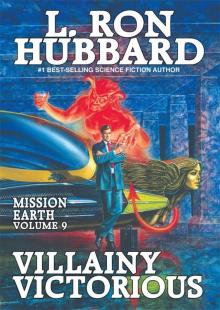 Villainy Victorious
Villainy Victorious Spy Killer
Spy Killer Ai! Pedrito!: When Intelligence Goes Wrong
Ai! Pedrito!: When Intelligence Goes Wrong The Dangerous Dimension
The Dangerous Dimension Mission Earth Volume 1: The Invaders Plan
Mission Earth Volume 1: The Invaders Plan The Slickers
The Slickers If I Were You
If I Were You The Doomed Planet
The Doomed Planet Writers of the Future Volume 31
Writers of the Future Volume 31 Mission Earth Volume 2: Black Genesis
Mission Earth Volume 2: Black Genesis Writers of the Future: 29
Writers of the Future: 29 Death Quest
Death Quest The Enemy Within
The Enemy Within Orders Is Orders
Orders Is Orders Hell's Legionnaire
Hell's Legionnaire L. Ron Hubbard Presents Writers of the Future 34
L. Ron Hubbard Presents Writers of the Future 34 The Scifi & Fantasy Collection
The Scifi & Fantasy Collection Dead Men Kill
Dead Men Kill Ole Doc Methuselah: The Intergalactic Adventures of the Soldier of Light
Ole Doc Methuselah: The Intergalactic Adventures of the Soldier of Light Shadows From Boot Hill
Shadows From Boot Hill Hurricane
Hurricane Mission Earth Volume 3: The Enemy Within
Mission Earth Volume 3: The Enemy Within Slaves of Sleep & the Masters of Sleep
Slaves of Sleep & the Masters of Sleep One Was Stubborn
One Was Stubborn Final Blackout: A Futuristic War Novel
Final Blackout: A Futuristic War Novel Devil's Manhunt
Devil's Manhunt A Matter of Matter
A Matter of Matter Voyage of Vengeance
Voyage of Vengeance If I Were You (Science Fiction & Fantasy Short Stories Collection)
If I Were You (Science Fiction & Fantasy Short Stories Collection) L. Ron Hubbard Presents Writers of the Future Volume 35
L. Ron Hubbard Presents Writers of the Future Volume 35 Mission Earth Volume 4: An Alien Affair
Mission Earth Volume 4: An Alien Affair Black Genesis
Black Genesis Tinhorn's Daughter
Tinhorn's Daughter Trouble on His Wings
Trouble on His Wings Writers of the Future Volume 27: The Best New Science Fiction and Fantasy of the Year
Writers of the Future Volume 27: The Best New Science Fiction and Fantasy of the Year Writers of the Future Volume 28: The Best New Science Fiction and Fantasy of the Year
Writers of the Future Volume 28: The Best New Science Fiction and Fantasy of the Year An Alien Affair
An Alien Affair Cargo of Coffins
Cargo of Coffins Mission Earth Volume 5: Fortune of Fear
Mission Earth Volume 5: Fortune of Fear Writers of the Future 32 Science Fiction & Fantasy Anthology
Writers of the Future 32 Science Fiction & Fantasy Anthology The Baron of Coyote River
The Baron of Coyote River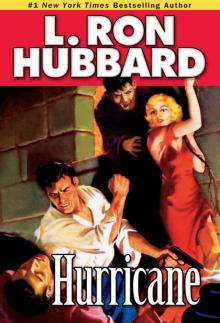 Hurricane (Stories From the Golden Age)
Hurricane (Stories From the Golden Age)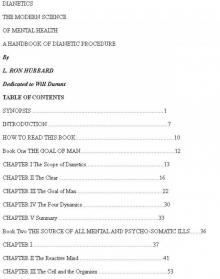 Dianetics: The Modern Science of Mental Health
Dianetics: The Modern Science of Mental Health Writers of the Future, Volume 30
Writers of the Future, Volume 30 Battlefield Earth: A Saga of the Year 3000
Battlefield Earth: A Saga of the Year 3000 Fear
Fear Disaster
Disaster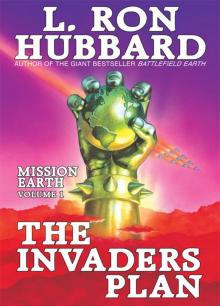 Invaders Plan, The: Mission Earth Volume 1
Invaders Plan, The: Mission Earth Volume 1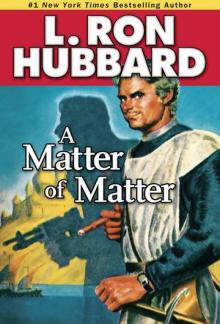 A Matter of Matter (Stories from the Golden Age)
A Matter of Matter (Stories from the Golden Age)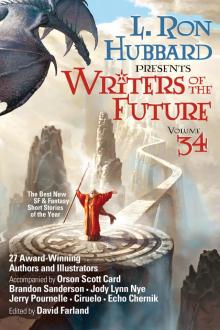 Writers of the Future Volume 34
Writers of the Future Volume 34 Death Waits at Sundown
Death Waits at Sundown One Was Stubbron
One Was Stubbron If I Were You (Stories from the Golden Age)
If I Were You (Stories from the Golden Age) Writers of the Future 32 Science Fiction & Fantasy Anthology (L. Ron Hubbard Presents Writers of the Future)
Writers of the Future 32 Science Fiction & Fantasy Anthology (L. Ron Hubbard Presents Writers of the Future) Writers of the Future, Volume 29
Writers of the Future, Volume 29 Mission Earth Volume 8: Disaster
Mission Earth Volume 8: Disaster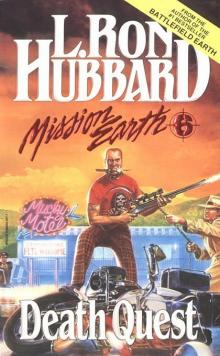 Mission Earth 6: Death Quest
Mission Earth 6: Death Quest Writers of the Future, Volume 27
Writers of the Future, Volume 27 Mission Earth Volume 7: Voyage of Vengeance
Mission Earth Volume 7: Voyage of Vengeance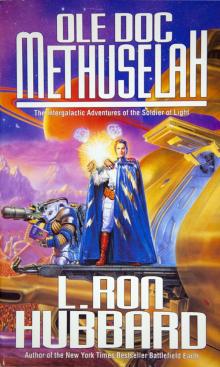 Ole Doc Methuselah
Ole Doc Methuselah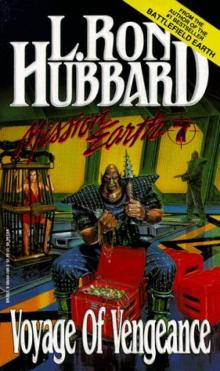 Mission Earth 07: Voyage of Vengeance
Mission Earth 07: Voyage of Vengeance Battlefield Earth
Battlefield Earth Fortune of Fear
Fortune of Fear Mission Earth 8: Disaster
Mission Earth 8: Disaster Mission Earth Volume 10: The Doomed Planet
Mission Earth Volume 10: The Doomed Planet Writers of the Future, Volume 28
Writers of the Future, Volume 28 Mission Earth Volume 6: Death Quest
Mission Earth Volume 6: Death Quest Dead Men Kill (Stories from the Golden Age)
Dead Men Kill (Stories from the Golden Age) Mission Earth 4: An Alien Affair
Mission Earth 4: An Alien Affair Spy Killer (Stories from the Golden Age)
Spy Killer (Stories from the Golden Age) Mission Earth Volume 9: Villainy Victorious
Mission Earth Volume 9: Villainy Victorious L. Ron Hubbard Presents Writers of the Future, Volume 33
L. Ron Hubbard Presents Writers of the Future, Volume 33